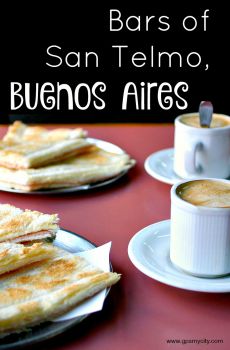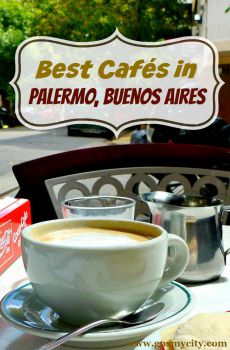
Avenida Corrientes, Buenos Aires
Corrientes Avenue (Avenida Corrientes) holds significant importance as one of the major thoroughfares in Buenos Aires. Stretching across 69 blocks, the avenue derives its name from one of the provinces of Argentina. Over the centuries, it has undergone various name changes, initially known as Del Sol during the 17th century, then San Nicolás from 1738 to 1808, and De Incháurregui from 1808 until 1822, before finally adopting its present name.
The term "Narrow Corrientes" (Corrientes Angosta) refers to the avenue before its 1930s widening. In 1936, it coincided with the construction of the Buenos Aires Obelisk. Despite being called "Corrientes Avenue," many still prefer "Corrientes Street," especially in its famous central section, immortalized in tango lyrics.
The street's history is deeply intertwined with the tango and the identity of porteños, the people of the port city. This connection is evident in the numerous commemorative plaques, around 40 in total, honoring significant figures from the history of tango placed on street corners.
In the 20th century, Corrientes Street became Buenos Aires' lively nightlife hub, known as "the street that never sleeps." It's filled with theaters, cinemas, and stunning Art Deco architecture from the '30s and '40s. Since the 1950s, it's been a favorite spot for intellectuals due to its numerous bookshops. The famous pizza parlors and restaurants make it the go-to urban weekend entertainment for generations of porteños.
At the far end of Corrientes, the Luna Park remains a symbol of mass sports and entertainment events, hosting boxing matches and concerts, among other attractions.
The term "Narrow Corrientes" (Corrientes Angosta) refers to the avenue before its 1930s widening. In 1936, it coincided with the construction of the Buenos Aires Obelisk. Despite being called "Corrientes Avenue," many still prefer "Corrientes Street," especially in its famous central section, immortalized in tango lyrics.
The street's history is deeply intertwined with the tango and the identity of porteños, the people of the port city. This connection is evident in the numerous commemorative plaques, around 40 in total, honoring significant figures from the history of tango placed on street corners.
In the 20th century, Corrientes Street became Buenos Aires' lively nightlife hub, known as "the street that never sleeps." It's filled with theaters, cinemas, and stunning Art Deco architecture from the '30s and '40s. Since the 1950s, it's been a favorite spot for intellectuals due to its numerous bookshops. The famous pizza parlors and restaurants make it the go-to urban weekend entertainment for generations of porteños.
At the far end of Corrientes, the Luna Park remains a symbol of mass sports and entertainment events, hosting boxing matches and concerts, among other attractions.
Want to visit this sight? Check out these Self-Guided Walking Tours in Buenos Aires. Alternatively, you can download the mobile app "GPSmyCity: Walks in 1K+ Cities" from Apple App Store or Google Play Store. The app turns your mobile device to a personal tour guide and it works offline, so no data plan is needed when traveling abroad.
Avenida Corrientes on Map
Sight Name: Avenida Corrientes
Sight Location: Buenos Aires, Argentina (See walking tours in Buenos Aires)
Sight Type: Attraction/Landmark
Guide(s) Containing This Sight:
Sight Location: Buenos Aires, Argentina (See walking tours in Buenos Aires)
Sight Type: Attraction/Landmark
Guide(s) Containing This Sight:
Walking Tours in Buenos Aires, Argentina
Create Your Own Walk in Buenos Aires
Creating your own self-guided walk in Buenos Aires is easy and fun. Choose the city attractions that you want to see and a walk route map will be created just for you. You can even set your hotel as the start point of the walk.
Buenos Aires Introduction Walking Tour
Buenos Aires is the capital city of Argentina. The city was first founded as Ciudad de Nuestra Señora Santa María del Buen Ayre in 1536 by the Spanish. But this settlement was quickly abandoned in 1542, and the city was refounded in 1580. Buenos Aires boomed as a port city focused on trade.
Argentina gained independence from Spanish rule during the May Revolution of 1810. Today, the May... view more
Tour Duration: 2 Hour(s)
Travel Distance: 4.7 Km or 2.9 Miles
Argentina gained independence from Spanish rule during the May Revolution of 1810. Today, the May... view more
Tour Duration: 2 Hour(s)
Travel Distance: 4.7 Km or 2.9 Miles
Recoleta Neighborhood Walking Tour
One of Buenos Aires’ most beautiful neighborhoods, Recoleta is the city’s heart of art and elegance, grace and modernism, culture and leisure. Here you will find lots of things to do, like visiting museums, galleries and cultural centers; relaxing in one of the beautiful parks and plazas; or sampling the delicious local food.
This walking tour along Recoleta begins at the Ateneo Grand... view more
Tour Duration: 2 Hour(s)
Travel Distance: 3.4 Km or 2.1 Miles
This walking tour along Recoleta begins at the Ateneo Grand... view more
Tour Duration: 2 Hour(s)
Travel Distance: 3.4 Km or 2.1 Miles
May Avenue Walking Tour
May Avenue (Avenida de Mayo) is one of the grandest and most important avenues in Buenos Aires, leading from Plaza de Mayo with the Pink House at one end, to Argentina’s National Congress building at the other. Named in honor of the May Revolution of 1810 which lead to the country’s independence from Spain, it is difficult not to compare this grand thoroughfare to other major boulevards around... view more
Tour Duration: 2 Hour(s)
Travel Distance: 2.3 Km or 1.4 Miles
Tour Duration: 2 Hour(s)
Travel Distance: 2.3 Km or 1.4 Miles
Palermo Area Walking Tour
Situated just back from one of the main thoroughfares, Santa Fe Avenue (Avenida Santa Fe), Palermo is a relaxed and culturally delightful area full of restaurants, cafes, and wall murals. The tree-lined streets are shady and many of the older Spanish-style houses were converted into small shops without compromising their original character. It’s an excellent place in which to sample the city’s... view more
Tour Duration: 2 Hour(s)
Travel Distance: 3.5 Km or 2.2 Miles
Tour Duration: 2 Hour(s)
Travel Distance: 3.5 Km or 2.2 Miles
Useful Travel Guides for Planning Your Trip
Top 6 Bars in San Telmo, Buenos Aires
With its cobbled streets, colonial era buildings and vibrant music and art scene, San Telmo is a great place to soak up the eclectic nature of Buenos Aires’ nightlife. The area boasts dozens of bars and cafes, with some of the city’s oldest lying next to the more modern. Indeed, San Telmo...
Popular Palermo Restaurants, Buenos Aires
Although many visitors tend to think that Argentina is a meat and potatoes country, the rich cultural heritage from Italy, Spain, Portugal, and other European countries provide a veritable smorgasboard of dining options. Palermo is the barrio in Buenos Aires often referred to as 'The Restaurant...
Top 12 Cafes in Palermo, Buenos Aires
The word "Palermo", believe it or not, may refer not just to Sicily, Italy, but also to Buenos Aires, Argentina. Indeed, this neighborhood (barrio) is largest in the city and is trendy and bohemian, renowned for its boutique shopping, cafes, restaurants, bars, and nightclubs. Oftentimes,...
Buenos Aires: 16 Shopping Ideas for Travelers
Other than a cool place to be and a dream destination for many adventure-minded folk, Buenos Aires is a great culture hub where one can experience first-hand all that Argentina has to offer - great football, terrific wine, killer steaks, and much much more. This guide is to help you steer yourself...








